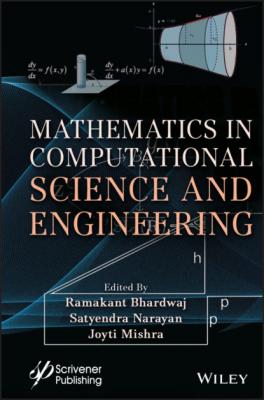Mathematics in Computational Science and Engineering. Группа авторов
Чтение книги онлайн.
Читать онлайн книгу Mathematics in Computational Science and Engineering - Группа авторов страница 15
 costs which may be caused an acquiring extra Inventories. The more regularly arranges are put and less the amounts bought on each request.
costs which may be caused an acquiring extra Inventories. The more regularly arranges are put and less the amounts bought on each request.
There is no quantity concession.
To survey the hidden suspicions of the EOQ model for the improved apprehension of current Inventory Management.
Shortages are not permitted.
1.2.4.2 Notations
The accompanying documentation is utilized to build up the model.
d = Total number of units produced.
k1 = Set up cost related to the arrangement of orders. L = additionally appear some of the region Q = Order quantity. Ic = The Stock processes for this pattern is
1.2.4.3 Mathematical Model
The mathematical method confesses the Inventories position and it is expressed as
Thing is also diminished at the ordinary demand amount d.
The ordering period for the models is
Put that the Normal Inventory stage is
The total price per unit time (TCU) is along these lines figured out as TCU(y) = Set up cost per unit time + Holding Cost per unit time
(1.14)
The most helpful assessment putting in a request sum y is controlled with method of reduce TCU(y) concerning y. Consider y is fundamental circumstance for finding the ideal assessment of y.
Here Y assumed as continuous,
(1.15)
The terms are additionally sufficient because of the reality TCU(y) is Convex.
The result of the situation yields the EOQ, y*as
Subsequently the most ideal Inventory strategy for the propounded model is
(1.16)
Units every
A new order needs no longer be acquired in the meanwhile it is ordered. Rather than of high-quality Lead time L, may also additionally appear some of the region and the receipt of an order as Reorder element inside the exemplary EOQ models. In this situation the reorder aspect shows up even as the Inventory degree drops to LD units.
Reorder point inside the conventional EOQ version assumes that the lead time L is an awful lot much less than the cycle period
Effective lead time is defined as
(1.17)
where n is the highest integer not exceeding
The range of integer cycle consists of in L is
(1.18)
Each the Inventory situation acts as if the interval amongst setting an order and getting another is Le.
The reorder factor as a result takes area while the Inventory degree drops to Le D.
1.3 Methodology
This research became applied quantitative research design to measured data due to Numerical and to get appropriate and specific statistics the frame of the researchers. This model examines how Inventory model can assist in minimising the total cost of Inventory model. The Trapezoidal guideline works by approximating the region under the graph of the capacity f(x) as Trapezoid and computing its area. It is ruled to locate the estimation of a positive fundamental utilizing numerical technique.
(1.19)
Let f(x) be continuous in the line [p,q] and DC be the curve Y = f(X) and DC, CB is terminal Ordinates.
Let OA = p and OB = q, then, AB = OB−OA = q−p
Divide AB into n same segment A, A1, A1A2……..An−1B
So that each segment
Portray the ordinate among
(1.20)
and put then be referred as Y1,Y2………YN,YN+1 respectively,
Then
(1.21)
where, A = Sum of the first and last ordinates
(1.22)
B = Sum of the remaining Ordinates as Trapezoidal rule
(1.23)
1.3.1 Brownian Motion
This segment provides information for the simple solution of a Brownian